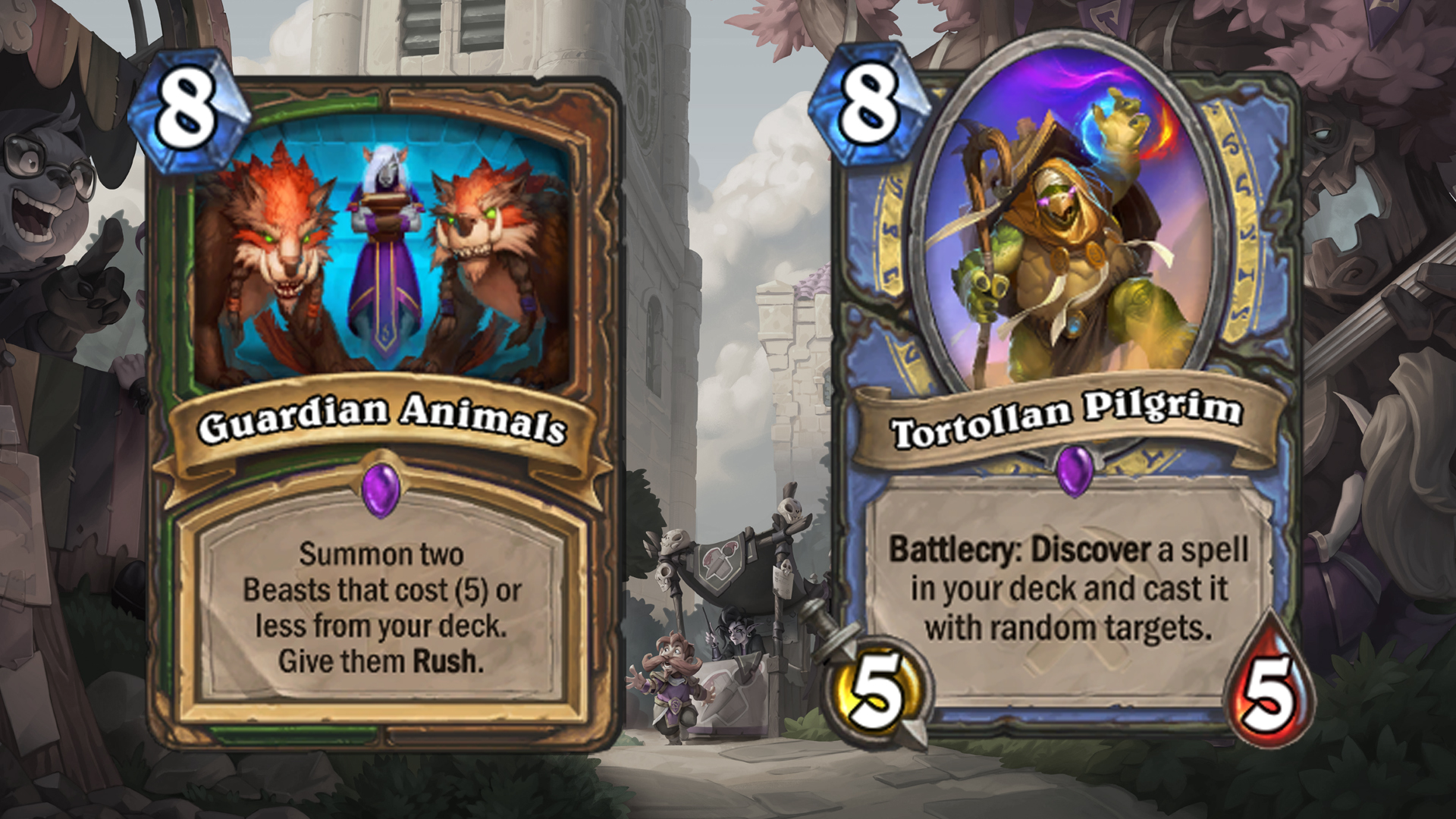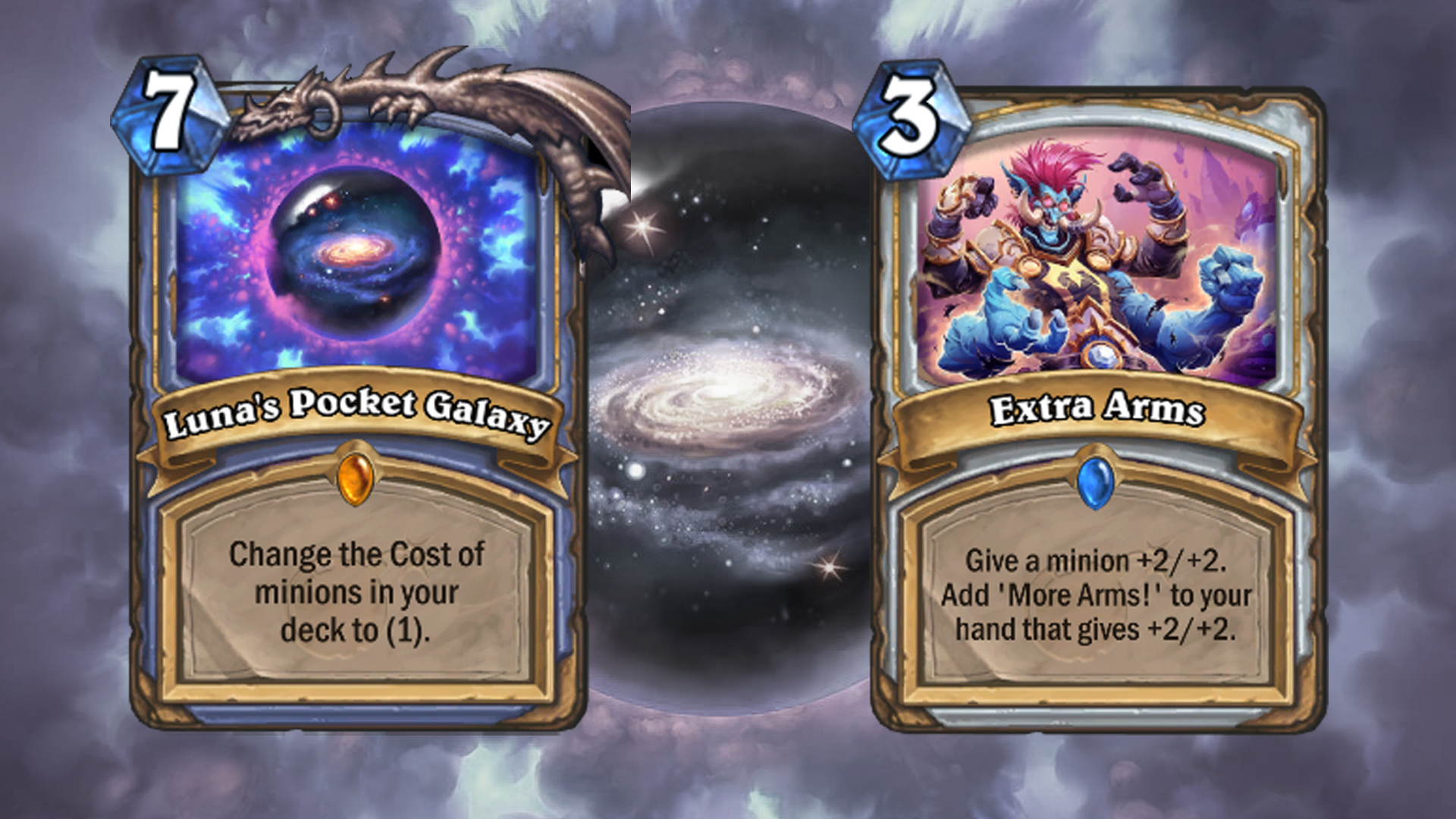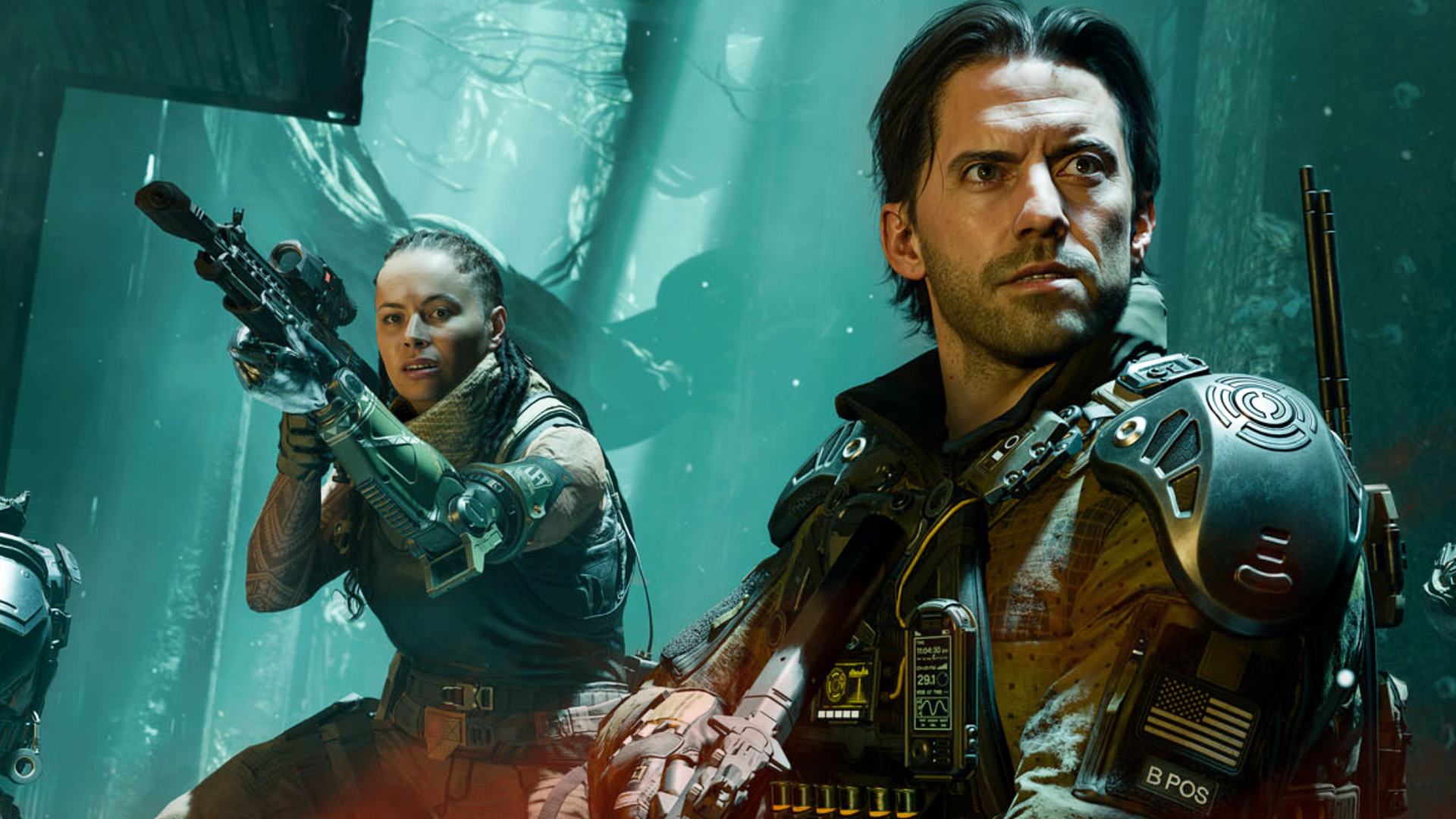How the hell did Hearthstone's meta get so healthy?
Dean "Iksar" Ayala tells us how Blizzard found the sweet spot, and what it's doing to stay there.
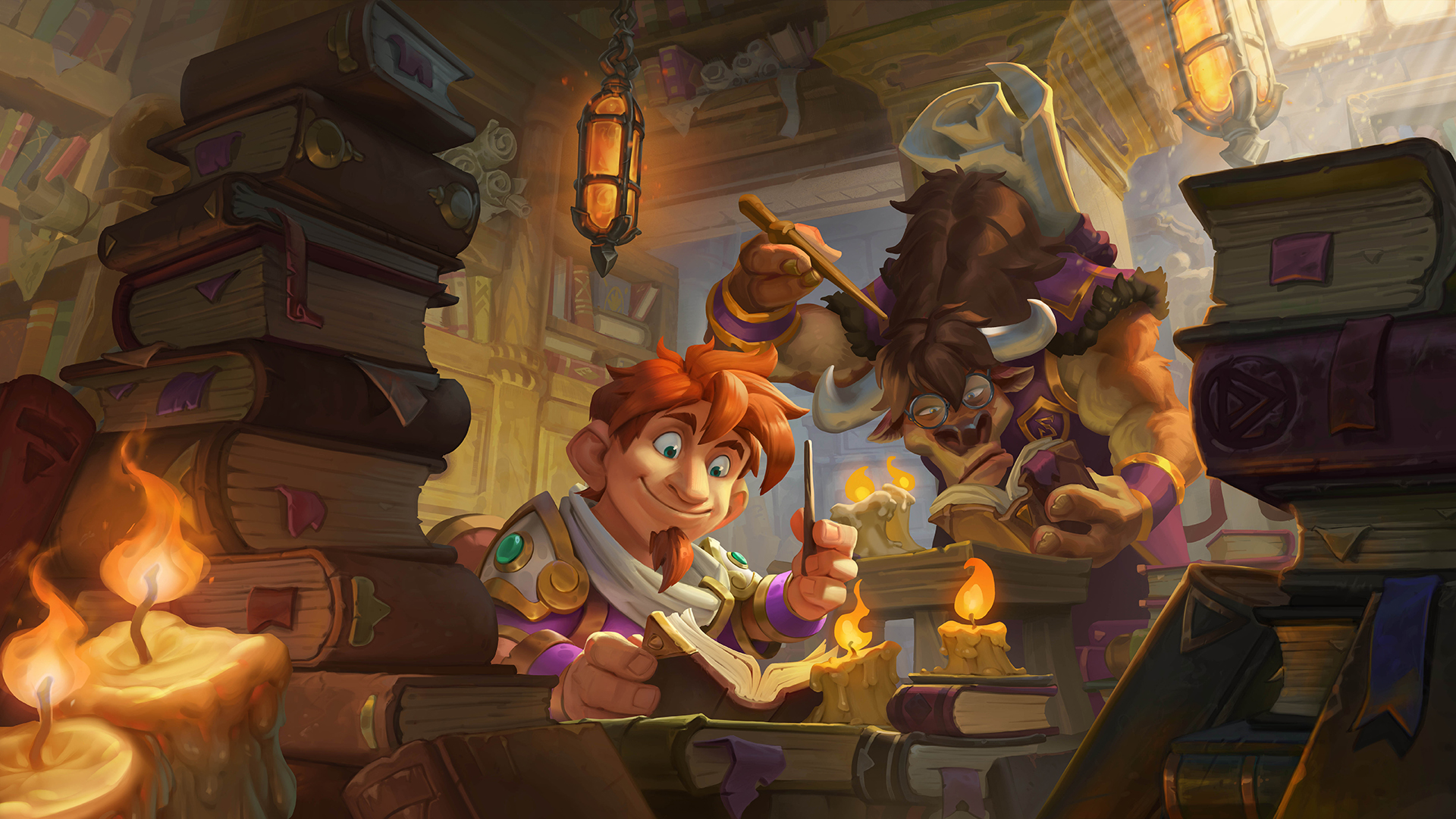
Losing always sucks. It doesn't matter whether it's random Tempo Mage 'created by' shenanigans, or a Dragon Priest stealing all your best cards and killing you with them, there's basically no fun way to lose. But, put that frustration aside for a moment, and it's clear that right now is one of the healthiest metas Hearthstone has ever seen.
If you don't believe me, you can check out the September Data Reaper Reports from Vicious Syndicate. Last month they reported two weeks in which we've been without a headlining Tier 1 deck, and we've just seen the same results for the first week of October. Multiple classes and archetypes feel genuinely viable to play in Ranked at the moment, and to find out how we got here, and whether it's likely to stay this way, I spoke to Dean "Iksar" Ayala, game designer on Hearthstone.
While 2020 has been a yearlong dumpster fire on most fronts, Hearthstone has quietly been going from strength to strength: The ongoing success of Battlegrounds, a brand new class introduced for the first time ever, frequent seasonal events, and even a complete rework of the ranked system. With the team now working remotely you'd think this would be a time for business as usual, but the bold decisions keep coming, and that includes a more aggressive approach to balancing problematic cards.
Practice makes perfect
"It's half the result of the team just getting better at it over time" said Ayala when we spoke via video call. Remember, the game is over six years old now, and in that time we've seen 15 expansions, 5 adventures and 39 keywords. Not to mention all the cards which have stretched the boundaries of balance in that time. "It's extremely challenging to balance a game where all 135 cards are pushed, but our team's getting really good at that."
"One of the things that Hearthstone gets to learn, probably more often than every other game we work on at Blizzard, is that we release a major product every four months. And now, it's getting even [busier]—we have things like Battlegrounds and major patches—but we release, and then we get to learn from it."
The team's philosophy, with regards to balance, has changed over time. The most recent expansion, Scholomance Academy, is an excellent example of a set containing really powerful new cards, where a high proportion feel potentially viable in competitive decks. "Not only do we have more experience, but we're pushing the cards to the absolute limits," said Ayala. "Seven or eight expansions ago we were more okay with making 20 or 30 cards that we knew weren't really going to see play, but they're there for some of the newer users, and they're there for Arena. But nowadays, I think we want all 135 cards for you to think about, or at least for us to be able to imagine what deck would this go in, and what meta?"
Seven or eight expansions ago we were more okay with making 20 or 30 cards that we knew weren't really going to see play, but they're there for some of the newer users, and they're there for Arena
Dean Ayala
Cards that don't achieve that goal are either redesigned or buffed until they feel good enough to slot in somewhere. Of course, the Hearthstone community are a creative bunch, and there are bound to be a few crazy discoveries when a new expansion releases. Take Scholomance sleeper card, Animated Broomstick, as an example. This one-drop Rush card has a Battlecry that also gives your other minions Rush, making it an insta-include in decks that thrive with lots of tiny minions, like Zoo Warlock. However, this card has found its way into strong contenders like Guardian Druid, and has since made a name for itself in Broom Paladin. It's an incredibly powerful card for just one-mana, but it was easy to miss amongst the flashier cards when the expansion dropped.
Keep up to date with the most important stories and the best deals, as picked by the PC Gamer team.
Picking the right card at the right time
Unlike previous years, in which balance changes were less frequent, the team is now much quicker to react to problem cards. "We're also more inclined to make a balance patch right away to correct things," says Ayala, "which makes it a little bit easier to have a healthy metagame". As a result, since Scholomance dropped we haven't seen any one class dominate with an untouchable Tier 1 deck for any long period of time. (Lest we forget the dark days of Druid's prolonged reign of terror fueled by Spreading Plague back in 2017.) The meta has also seen more decks and classes fluctuating between tiers, more often.
I asked Ayala how the team make the call about when to intervene. "If we're looking at a deck that's too powerful, we tend to try to nerf the one-cost cards, or the cards that are actually ending the game, because those are the ones that have the most visceral reaction from players." These are the cards that players tend to remember the most because they'll either start the game feeling at an immediate disadvantage, or feel as though there was nothing they could do to avoid losing the game.
Ayala highlighted Libram Paladin from the current meta, and Even Paladin from the Witchwood timeline, as examples of extremely powerful decks that still feel fair. "Those decks can be the most powerful decks in the meta without being frustrating." Whereas decks like Resurrect Priest, Freeze Mage, and OTK builds find their cards in the firing line for balancing more often. These decks feel more painful to lose to as they can draw a specific set of tools which essentially shut down the rest of the match. Once a Freeze Mage has spent four turns freezing your board, it's difficult not to feel salty.
Sometimes, it's a specific card which enables an entire strategy that needs to be changed, as we saw recently with Guardian Animals and Tortollan Pilgrim. The power spike from playing Guardian Animals was so big that the whole meta became warped around beating it. "Even for the players playing it, the games where they drew it, and the games where they didn't, it feels like a lot of your decisions don't matter as much. So, when we have superpower outlier cards that make players feel like the rest of their decisions didn't matter, we tend to tone those cards down too, it's a pretty fine balance," said Ayala.
Balance changes are far less reactive than we may realise, though. "Usually when a balance patch happens, we've been preparing for it for a few weeks," Ayala explained. The majority of the team's workload still falls to card design, but they'll frequently check in to discuss potential card adjustments. As you'd expect, they're also playing the live game just like the rest of us, so they know when something doesn't feel right.
Illidan's big entrance
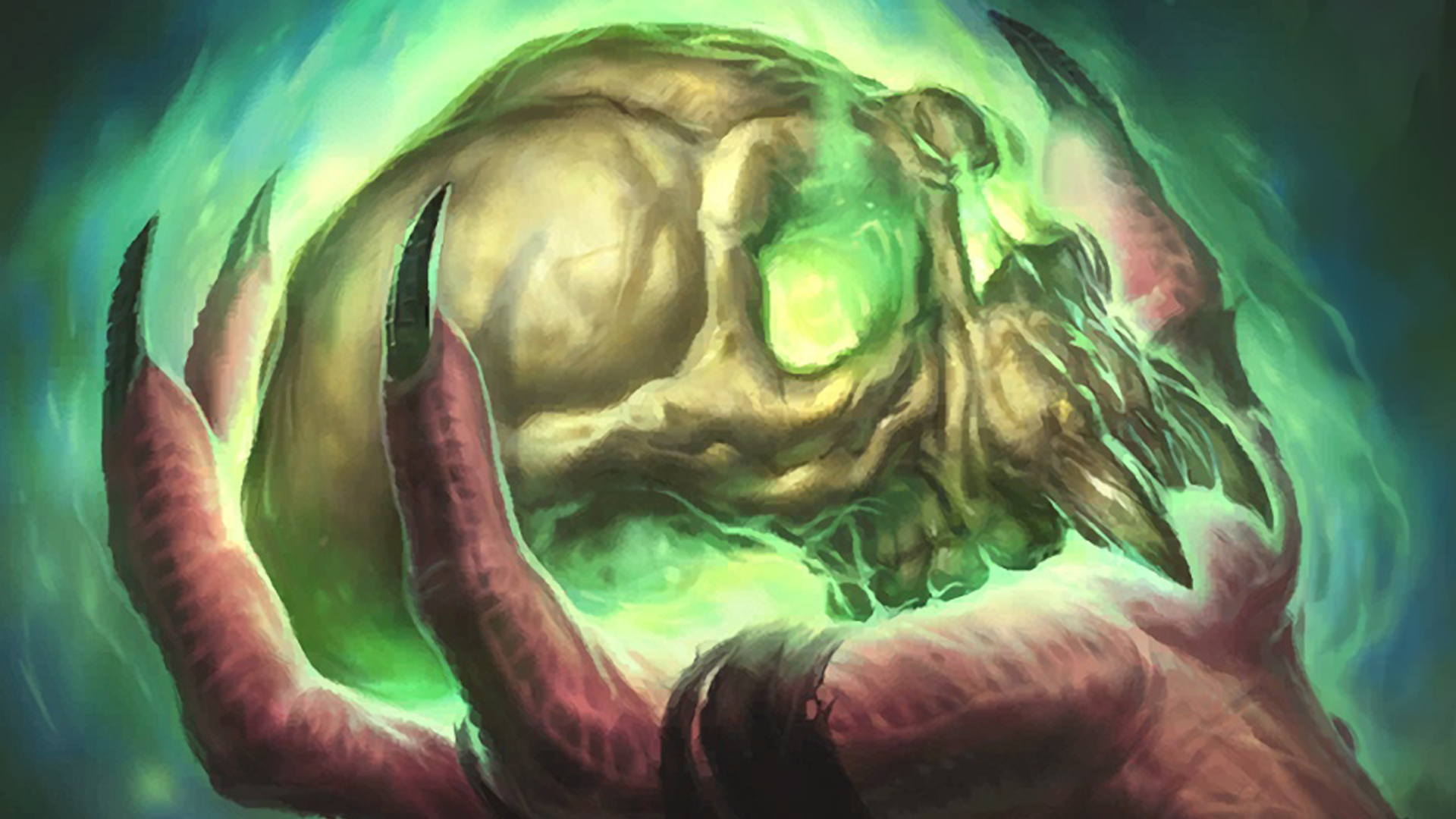
"Demon Hunter's launch was very exciting. The low amounts of RNG in the class make it interesting. It was extremely overpowered but I don't think that was a problem, as it was rapidly addressed and we had a few days of being able to do crazy things with a new class"—Neil "l0rinda" Bond, HSesports
Speaking of things that were a bit too powerful, let's talk about the advent of Hearthstone's 10th class in April.
Within the first 24 hours, Demon Hunter became an absolute terror, dominating all other classes. Illidan's early tempo decks were steaming through the ranks, and all but the hardest counter decks struggled to live with the Lord of Outland's brutally efficient, high tempo play style. In an unprecedented move, the first nerfs were announced a day later, and it took multiple swings of the nerf hammer thereafter before Demon Hunter settled down.
"Demon Hunter, on release, is probably the most powerful thing we've ever released," admitted Ayala. "Every time we nerf a card that means that we missed, to some degree. With Demon Hunter, we were a little bit disappointed in how powerful that was on launch, but it was pretty quick to fix. We changed three or four cards, and we changed them pretty minorly."
Unlike the other classes that have a six-year history and unique gameplay styles, Demon Hunter was starting fresh in an established meta, so it had to make a strong first impression. "We spent so much of our time trying to find the fun," Ayala recalled, listing the class' hero power and overall style of the gameplay as particular focuses. "We found something that I think was fun, but the archetypes themselves didn't really fall into place like we wanted them to."
With Demon Hunter, we were a little bit disappointed in how powerful that was on launch
Dean Ayala
We all felt the wrath of Demon Hunter's aggro deck at launch, but Ayala also mentioned that there was a Bigger Demon deck that didn't really work out. That said, he's happier with how things have evolved moving into the most recent expansion, which has diversified Demon Hunter's tools further. "When Scholomance hit, having the Soul Fragments deck, it feels a little bit different because you're doing lots of healing, and playing a little bit later in the game," Ayala explained.
The team is ultimately happy where Demon Hunter has landed as we approach the end of the year, but there are plans for further exploring the flavour of the class: "I think in the future we still want Demon Hunters to have more of a big minion control deck that we haven't hit yet, but I'm pretty happy with the two different archetypes they have now which is pretty heavy aggro and Soul Fragments."
Bring the buffs
Another huge change in philosophy is that Blizzard no longer just nerfs cards. Buffs are now on the menu, too. In June last year we saw, for the first time since the game left beta, two cards from each class receive buffs. For the community, which had long argued that too many cards were being left to rot that could be playable with a slight tweak, there was much rejoicing.
In order to make the same impact to one nerf, we'd have to make ten buffs
Dean Ayala
But Blizzard may have been a little too generous in their handling of Mage and Priest. Just under three months later, Luna's Pocket Galaxy and Extra Arms—which each had their costs reduced—found that their buffs were reverted. In the time between the two updates, both cards found their way into most decks, with Luna's Pocket Galaxy feeling particularly overpowered at just five mana. Over-tuning them had created new woes, and this only proved Blizzard right for being cautious about buffs in the first place.
There are other reasons why the Hearthstone team was reluctant to buff cards in the past, though. In normal circumstances, the impact is actually much lower than making nerfs. "You have this very small window for success," explained Ayala, "and it only impacts people that want to play that deck, whereas if you nerf the best thing, the most populous thing, it kind of impacts everybody... That's how I used to think of it, and the bang for buck on buffs is just too low. In order to make the same impact to one nerf, we'd have to make ten buffs."
The team's stance has softened, though, and when buffs do arrive it's normally with future sets in mind. "Usually it's going to be a pretty minor change, but in the future, that class will be healthier because those cards will be a little bit more viable."
While the meta is currently in good shape, Shaman and Warlock are the classes that are struggling most. Shaman, in particular, is on the team's radar for potential adjustments in the next major patch (18.6). "I think we're going to look at a lot of things going on in Shaman to see if there's anything that we can change that would make them a lot more powerful going into the next expansion," said Ayala.
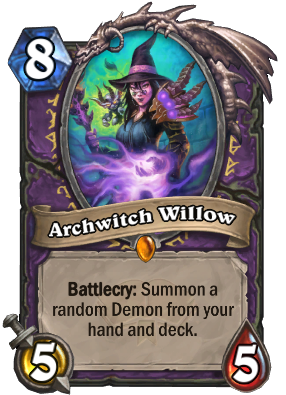
Archwitch Willow was previously a 9-cost card with 7/7 stats.
I also asked about Archwitch Willow, the Warlock legendary that was recently buffed. What's most interesting about this card is that it seems powerful in a vacuum, but the big Demon cards just aren't there to support it.
Ayala agrees that Willow looks like a pretty scary prospect, but "over time, we kind of learned that it's pretty hard to play cards like that, especially with Warlock not having tons of support to get to the late game... I think that over time we're definitely going to support it." He went on to say that "as soon as we add the right support cards for Willow, then all of a sudden you have a different deck. I think, when people are naming the deck, they'll probably call it a 'Willow deck'. It's the kind of card that you put in your deck and try to build around."
'Created by'
Statistically we're enjoying one of the healthiest metas in Hearthstone history, but one thing that's inflaming the community of late is the discussion surrounding cards that are 'created by' others. Over the years, we've seen the introduction of Lackeys, the Discover keyword, and random card generation from tools like Mana Cyclone and Evocation.
"We're always going to have some amount of card generation," said Ayala. "Discover is something that we put in any set just because it was a mechanic that was pretty well received, and I think it makes Hearthstone more fun. That said, we actually have toned back on it quite a bit in the future expansion."
Let's be honest, we've all found a helpful dragon from Dragonqueen Alexstrasza, or found lethal damage from a Kobold Lackey before. Card generation can shake up matches in interesting ways, but when it's overused and gifts a player something too powerful too often, it can become a problem. As Zalae tweeted recently, it's not like we're playing chess here, there's far more room for creativity.
Maybe I should clarify this is my sincere thoughts... I've been saying as much on stream for weeks now. I really don't have a problem with losing to random stuff in hs. I signed up for it by playing the game. If I wanted to be playing chess I would be.October 9, 2020
In our interview, Ayala went on to talk about how control decks have changed as a result of more card generation being available in Hearthstone. "Nowadays, control decks often have 29 cards that are all removable cards. And they have one card that is their infinite value generator." This card can feel bad to lose to when you've constructed a heavier deck with a clear game plan that'll feature significant tradeoffs, such as losing to aggro decks.
The Hearthstone team feels the community's frustrations, though and they've "definitely scaled back a little bit on random generation," even though it's not something that'll ever be removed entirely. Ayala outlined that he thinks "control games are a lot more fun when you're playing these different threats that you put in your deck, versus just putting this one card in your deck and having tons of removal," so here's hoping we see more interesting control options available in Standard before 2020 is over.
How long can this go on?
From nerfing individual cards, to preparing classes for future expansions, we've entered a steady era of balance in Standard Hearthstone. With the final expansion of the year a couple of months away in December, we've still got some time to experiment with the Dual-Class and Spellburst cards added in Scholomance Academy, before new keywords and mechanics fold into the mix.
In previous years, the expansions that usher in the Winter Veil festivities are usually the most powerful—last year we welcomed Galakrond, for example. So, it'll be interesting to see how the meta shifts towards the end of the year.
There are still plenty of unannounced events on the Year of the Phoenix roadmap to keep players interested. Alongside the ongoing Book of Heroes solo adventures, Battlegrounds updates, and Tavern Brawls we're still waiting for Blizzard to announce what Hearthstone's new mode will be. There's also a 'major rework' coming to Hearthstone rewards, in which 'most players' will be better off. For now, I'm happy to continue battling my way through the ranks as I switch between Libram Paladin and Highlander Hunter.
As PC Gamer's guides writer, Emma is usually juggling several games at once. She loves competitive first-person shooters like CS:GO and Call of Duty, but she always has time for a few rounds of Hearthstone. She's happiest when she's rescuing pugs in Spelunky 2.
